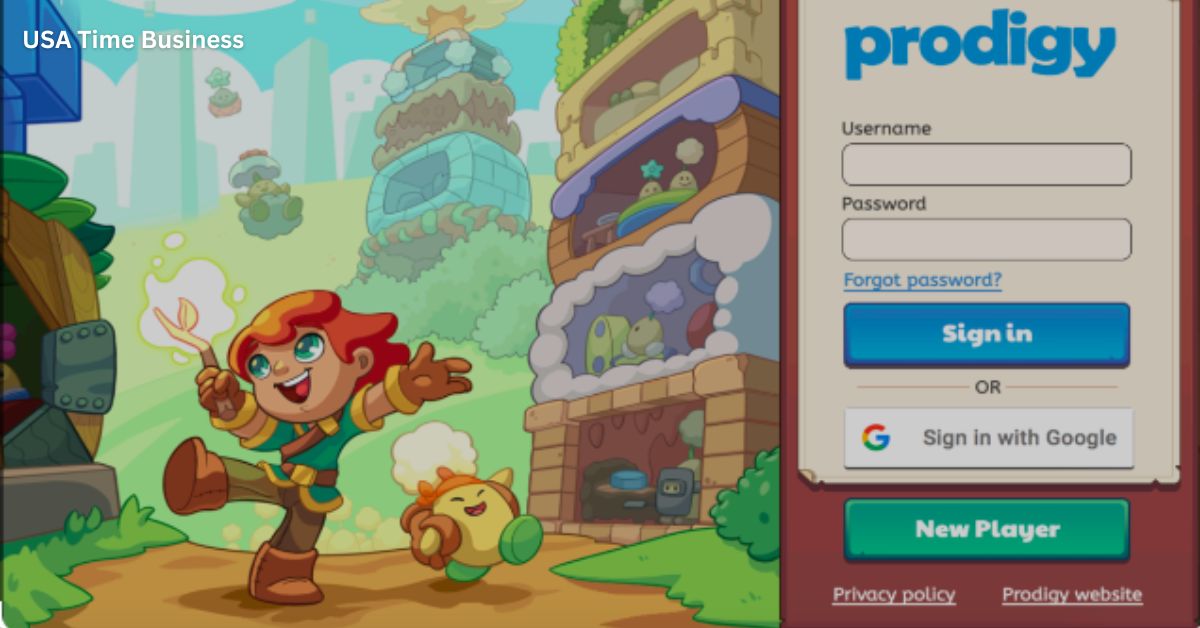Welcome to the future of education, where digital technologies are revolutionizing traditional Classroom 6x! In this blog post, we will explore the exciting developments in education and delve into the potential of a digital Classroom 6x. From interactive lessons to personalized learning experiences, technology is reshaping how we acquire knowledge and skills.
Gone are the days when textbooks were our only source of information. The impact of technology on education has been profound, opening up new avenues for students and teachers alike. So fasten your seatbelts as we journey through time and space to discover the wonders of the 6x Revolution in Classroom 6x!
But wait, you may wonder: what is a digital Classroom 6x? How does it differ from its traditional counterpart? Fear not! We will unravel these mysteries and explore the benefits and challenges of embracing this technological shift.
So grab your tablets or laptops (or even smartphones!) and dive headfirst into this brave new world where knowledge knows no bounds. Get ready to witness firsthand how teachers adapt their roles in this ever-evolving landscape as we ponder what lies ahead for education. It’s an exhilarating ride filled with possibilities!
Without further ado, let us explore the future of education – Classroom 6x 6x Revolution!
Contents
- 1 Traditional Classroom 6x vs. Digital Classroom 6x
- 2 The Impact of Technology on Education
- 3 Benefits of a Digital Classroom 6x
- 4 Challenges of Implementing a Digital Classroom 6x
- 5 The Role of Teachers in the 6x Revolution
- 6 Future Predictions for Education
- 7 Conclusion and Reflection on the Evolution of Education
- 8 FAQs
- 8.1 Q: What is the future of education?
- 8.2 Q: How does technology impact education?
- 8.3 Q: What are the benefits of a digital Classroom 6x?
- 8.4 Q: What challenges come with implementing a digital Classroom 6x?
- 8.5 Q: What role do teachers play in the 6x Revolution?
- 8.6 Q: Can you predict what changes lie ahead for education?
Traditional Classroom 6x vs. Digital Classroom 6x
In the traditional Classroom 6x, students are seated in rows facing the front, where a teacher stands at the chalkboard delivering lessons. The learning experience is typically limited to textbooks and handwritten notes. Interaction between students is often confined to small group activities or class discussions.
Enter the digital Classroom 6x, an innovative space that transcends these physical barriers. Here, students can access knowledge through online resources and educational platforms. Instead of relying solely on lectures, teachers can incorporate multimedia elements like videos and interactive presentations to bring subjects to life.
The digital Classroom 6x encourages student collaboration and engagement through virtual discussions and online forums. Students can connect with peers from around the globe, fostering cultural understanding and expanding their perspectives.
Technology also enables personalized learning experiences tailored to each student’s needs and pace of progress. With adaptive learning software, students can receive immediate feedback on their work, identifying areas for improvement while building confidence in their abilities.
However, it’s also essential to recognize some drawbacks of the digital Classroom 6x. The lack of face-to-face interaction may hinder social development skills nurtured in traditional Classroom 6x. Additionally, connectivity issues or technical glitches could disrupt learning experiences if not addressed promptly.
Both traditional Classroom 6x and digital Classroom 6x possess unique strengths and limitations. It will be interesting to see how education continues evolving by striking a balance between these approaches – harnessing technology without losing sight of human connection – for an optimal future learning environment.
The Impact of Technology on Education
Technology has undoubtedly revolutionized the field of education. Technology has significantly changed how we learn and teach, from traditional Classroom 6x settings to the digital era.
One notable impact of technology is the accessibility it provides. Online platforms and resources allow students to access educational materials anytime, anywhere. This flexibility allows for personalized learning experiences tailored to individual needs and preferences.
Moreover, technology has enhanced collaboration among students. Virtual Classroom 6x enable seamless communication and cooperation between peers from different locations: online discussion forums and collaborative projects foster engagement and critical thinking skills.
Furthermore, interactive multimedia tools have made learning more engaging and dynamic. Videos, simulations, and virtual reality applications bring concepts to life in ways that traditional textbooks cannot match.
Additionally, technology enables data-driven instruction through analytics tools that track student progress comprehensively. Teachers can identify areas where students struggle or excel more precisely, allowing for targeted interventions or enrichment opportunities.
However, along with these benefits come challenges as well. The digital divide remains a concern as not all students have equal access to devices and internet connectivity at home. Furthermore, there may be resistance from educators who are hesitant to fully embrace new technologies due to a lack of training or fear of obsolescence.
Nonetheless, technology will continue shaping the future of education by expanding possibilities for teaching methods and curriculum design while improving access to quality education worldwide.
Benefits of a Digital Classroom 6x
- The shift from traditional to digital Classroom 6x has brought numerous benefits for students and teachers. One significant advantage is the accessibility of educational resources. With just a few clicks, students can access vast information, videos, and interactive tools that enhance their learning experience.
- Digital Classroom 6x also foster collaboration among students. Through online platforms and virtual discussions, students can connect with peers worldwide, share ideas, and work on projects together. This not only broadens their perspectives but also helps develop crucial teamwork skills that are essential in today’s interconnected world.
- In addition to collaboration, digital Classroom 6x promote personalized learning. Students can progress at their own pace and focus on areas where they need more support or challenge themselves further if they’re ready. Adaptive learning software tailors lessons to individual needs, ensuring each student receives targeted instruction based on their abilities.
- Another benefit is the enhanced engagement offered by digital tools. Interactive presentations, gamified quizzes, and multimedia content capture students’ attention and make learning more enjoyable. Incorporating technology into the Classroom 6x makes education more dynamic and encourages active participation rather than passive listening.
- Moreover, digital Classroom 6x prepare students for the future job market by equipping them with essential technological skills. In today’s increasingly digitized world, proficiency in using technology is no longer optional – it’s necessary for success in almost any career path.
- Embracing digital Classroom 6x brings a multitude of benefits, such as increased access to resources, improved collaboration opportunities among students worldwide, personalized learning experiences tailored to individual needs, enhanced engagement through interactive tools, and better preparation for future careers in an ever-evolving technological landscape.
Challenges of Implementing a Digital Classroom 6x
Implementing a digital Classroom 6x comes with its fair share of challenges. One major hurdle is the initial cost and investment required to set up the necessary infrastructure and provide technology devices for all students. Not all schools have the financial resources to undertake such an endeavor, making ensuring equal access to digital learning opportunities difficult.
Another challenge is ensuring that teachers are adequately trained in using technology effectively in the Classroom 6x. Many educators may need to be more familiar with or comfortable using digital tools, which can hinder their ability to integrate technology into their teaching practices effectively.
Furthermore, there may be resistance from students and parents who are accustomed to more traditional methods of instruction. Some may argue that technology-dependent Classroom 6x lack personal interaction and human connection, posing a potential barrier to adoption.
Additionally, issues related to internet connectivity and technical glitches can disrupt the flow of lessons and lead to frustrations among teachers and students. Implementing a digital Classroom 6x becomes even more challenging
without reliable internet access and proper technical support. Privacy and security issues arise when utilizing online platforms for learning purposes. Safeguarding student data becomes paramount as schools navigate various regulations surrounding data protection.
Despite these challenges, schools must address them proactively to reap the benefits of digital Classroom 6x. Careful planning, teacher training programs, adequate resource allocation, addressing connectivity issues, and prioritizing security measures can help overcome these obstacles.
The Role of Teachers in the 6x Revolution
Teachers have always been the backbone of education, and their role in the 6x Revolution is no exception. Their role becomes even more crucial as we navigate this era of digital Classroom 6x and technological advancements.
With technology revolutionizing education, teachers must adapt to new teaching methods and tools. They are no longer just imparting knowledge but also guiding students on effectively using these technologies for learning. Teachers become facilitators who encourage critical thinking, problem-solving skills, collaboration, and creativity.
Teachers play a significant role in curating online resources that align with curriculum objectives in a digital Classroom 6x setting. They must stay updated with the latest educational apps, software programs, and online platforms to enhance student engagement and learning outcomes.
Moreover, teachers become mentors who provide personalized guidance based on each student’s unique needs and learning style. They create an inclusive environment where students feel valued and supported throughout their educational journey.
Additionally, teachers take on the responsibility of ensuring digital literacy among students. They teach them to navigate information overload responsibly by critically evaluating sources and promoting media literacy skills.
Furthermore, teachers act as evaluators who assess students’ progress using various assessment methods suitable for the digital realm. This includes formative assessments like quizzes or interactive activities integrated into digital platforms or summative assessments like projects or presentations created using multimedia tools.
As technology evolves rapidly in education, teachers need to embrace lifelong learning. Continuous professional development enables them to stay ahead of emerging trends in EdTech while equipping them with the necessary knowledge and skills for effective teaching in the ever-changing education landscape.
Future Predictions for Education
As we look ahead to the future, it is clear that education will continue to undergo significant transformations. One prediction is that virtual reality (VR) and augmented reality (AR) technologies will become integral components of the Classroom 6x experience. Students can explore historical events, visit far-off places, and engage in immersive learning experiences without leaving their seats.
Another exciting development on the horizon is personalized learning through artificial intelligence (AI). With AI-powered platforms, students can receive individualized instruction tailored to their unique needs and learning styles. This technology has the potential to revolutionize education by ensuring that every student gets a customized educational experience.
Furthermore, online learning will become even more prevalent in the future. As technology advances and internet access becomes more widespread, traditional brick-and-mortar schools may only be necessary for some subjects. Online courses offer flexibility and accessibility, allowing students from different locations or with diverse commitments to access quality education.
Additionally, collaborative learning tools such as video conferencing platforms and shared digital workspaces are predicted to play an increasingly important role in education. These tools facilitate communication and collaboration among students from different backgrounds and locations.
Moreover, there is growing interest in incorporating gamification into Classroom 6x. Gamified elements can engage learning by introducing competition, reward systems, and interactive challenges into educational activities.
Conclusion and Reflection on the Evolution of Education
- As we reflect on the evolution of education, it becomes clear that technology has significantly transformed how we learn and teach. The traditional Classroom 6x model no longer dominates as digital Classroom 6x have become more prevalent. This shift has brought about both benefits and challenges.
- One of the key benefits of a digital Classroom 6x is increased accessibility to educational resources. Students can access a wealth of information worldwide with just a few clicks. This opens up endless possibilities for research, exploration, and collaboration.
- Furthermore, technology in education allows for personalized learning experiences. Students can work independently and cater their studies to their needs and interests. This not only enhances engagement but also promotes critical thinking skills.
- However, implementing a digital Classroom 6x does come with its share of challenges. There is often resistance to change from teachers who may feel overwhelmed or unprepared for integrating technology into their teaching methods. Additionally, there may be concerns about privacy and security when using online platforms.
- The role of teachers in this 6x Revolution cannot be underestimated. While technology provides new tools for instruction, it is ultimately the teacher’s expertise that guides students through the learning process. Teachers must adapt to these changes by embracing technological advancements while maintaining meaningful connections with their students.
- Looking ahead, predictions for the future of education indicate even greater integration of virtual reality (VR), artificial intelligence (AI), and augmented reality (AR) into Classroom 6x worldwide. These technologies will enhance interactive learning experiences and expand educational opportunities beyond physical limitations.
- As we continue toward an increasingly digitized world, ensuring that education keeps pace with technological advancements is crucial. By leveraging technology effectively in our Classroom 6x while acknowledging its potential challenges, we can empower our students to thrive in an ever-evolving global society.
FAQs
Q: What is the future of education?
A: The future of education lies in embracing technology and creating a digital Classroom 6x environment. This Revolution will transform how we learn, making education more accessible, personalized, and engaging.
Q: How does technology impact education?
A: Technology has profoundly impacted education by providing access to vast amounts of information, facilitating interactive learning experiences, and promoting collaboration among students. It enhances critical thinking skills and prepares students for the digital age.
Q: What are the benefits of a digital Classroom 6x?
A: A digital Classroom 6x offers numerous advantages, such as flexibility in learning schedules, access to diverse resources worldwide, increased student engagement through interactive tools and multimedia content, instant assessment feedback, and improved communication between teachers and students.
Q: What challenges come with implementing a digital Classroom 6x?
A: Implementing a digital Classroom 6x comes with its fair share of challenges. Some common obstacles include lack of infrastructure or internet connectivity in certain areas, teacher training to use educational technologies effectively, and ensuring equal access to devices for all students regardless of their socio-economic backgrounds.
Q: What role do teachers play in the 6x Revolution?
A: Teachers continue to be integral to education even in this technological Revolution. They act as facilitators who guide learners through their educational journey while incorporating technology into their teaching methods. Their roles evolve to become mentors who inspire creativity and critical thinking while fostering collaboration among students.
Q: Can you predict what changes lie ahead for education?
A: While it’s challenging to accurately predict every change in education due to rapid technological advancements, some trends can be expected. These include personalized learning pathways tailored to each student’s needs using adaptive software programs or artificial intelligence (AI), virtual reality (VR) becoming more integrated into Classroom 6x for immersive learning experiences, and extensively utilizing gamification techniques for increased student engagement.
Good luck, Habibi!
Come to the website and explore some mind-blowing content.
- Why Every Fashionista Needs a pork pie hat in Their Wardrobe

- Ultimate Guide to Shopping for parachute pants: Where to Buy, What to Look For

- Exploring the Delicate Flavors of tagliolini Pasta: A Culinary Journey

- Uncovering the Truth Behind blog del narco: A Deep Dive into Mexico’s Drug War

- Exploring the History and Tradition of cempasuchil in Day of the Dead Celebrations

- The Ultimate Guide to boquerones: How to Prepare and Enjoy these Spanish Delicacies






